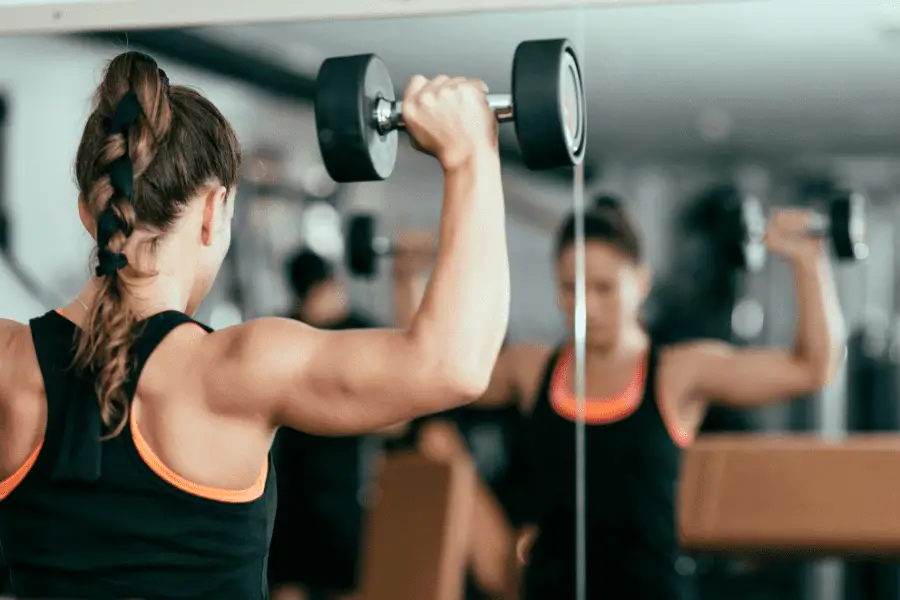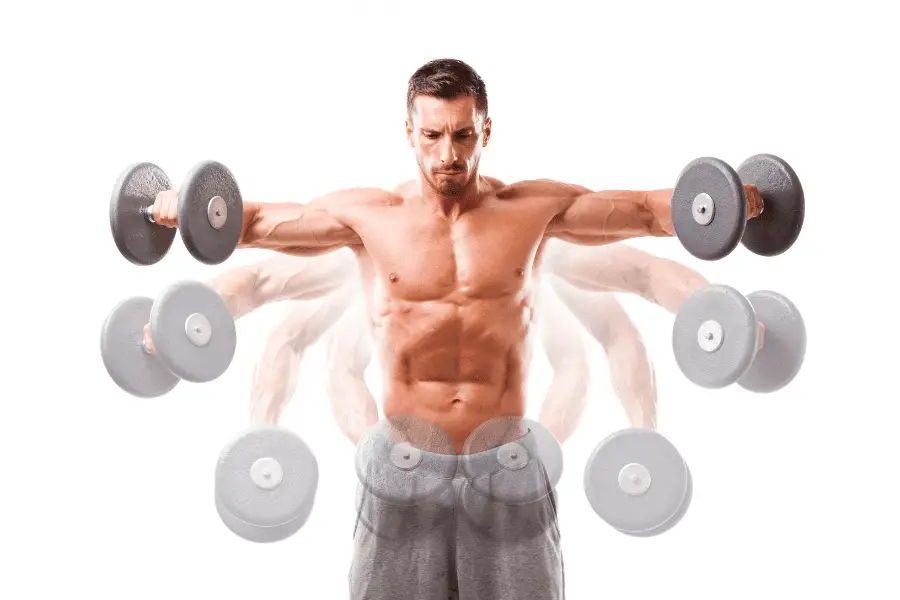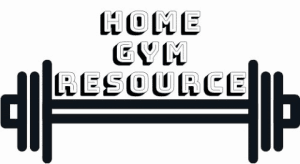The shoulders are the widest part of your body and having wide, round shoulders draw attention and create an impressive looking physique. The shoulder muscles are quite small and growing them takes some time and effort. But how much shoulder training is actually necessary? Here’s what you want to know.
While absolute beginners will see some growth of the deltoids with 8 working sets a week. For optimal growth, two workouts with 12 sets per workout works well. Shoulders need quite a lot of volume to grow and recover quite quickly.
Let’s take a look at the details of those sets, which exercises you should count and how many repetitions per set works well as well as if exercise alone is enough to grow the shoulders.
Contents
How Many Sets Per Week Is Enough?
What is enough depends on your goals of coarse. In this post, we’re going for the optimal amount of muscle growth. Everyone understands that to grow a muscle, you have to train it. And there is a pretty clear trend that people who go to the gym more often and/or for longer have bigger muscles. But is there a limit?
Too much of a good thing turns anything bad and working out is no different. You can go too far. While there are differences between people how much they can handle, there are some general guidelines for the optimal amount of sets that will get you to the optimal amount for most people. In general, more sets will be better for muscle growth but at some point you run into the limits of recovery. Once you can’t properly recover from a workout before the next one, you can’t train any more. But how much can most people train their shoulders?

Most people need 6 sets of direct shoulders work a week to maintain the size. That’s for intermediate to experienced weightlifters though. Beginners will likely see a little bit of growth even with this amount of sets.
However, for optimal growth aim for at least 8 sets of shoulders work per week but up to 24 sets per week, spread out over 2 workouts (12 sets per workout) is best to grow your shoulders. You can also spread it out over 3 workouts if that works better for you. You want to pick 2-3 exercises and spread the sets over those. 24 sets is a lot and for beginners that amount of volume is not necessary. About 12-16 sets per week is great for beginners to grow their shoulders.
More than 24 sets per week is going to be a problem for many people because of recovery reasons. Workouts break down the muscle and this has to be repaired for the muscle to grow. If the muscle isn’t fully recovered before the next workout, you’re taking one step forward but two steps back.
As said, these are general guidelines that work for most people. There are always genetic outliers that can handle much more or less. Also, this is for people that train without chemical ‘help’. If you do use performance enhancers this goes out the window since most of what those compounds do is make recovery faster. Also keep in mind the other workouts you do have an impact on recovery.
Suggested: Is training shoulders twice a week enough?
What Is A Set?
Maybe it’s good to quickly think about what a set actually is. When you go to the gym or anywhere else you work out, you do exercises in short bursts of roughly 5-20 repetitions. One of those bursts is called a set. A set consists of a number of repetitions and you usually perform more than one set of one exercise. Three sets per exercise is very common but up to 5 sets per exercise is fine.
You do this because doing 100 repetitions in a row is not possible in most cases unless you use really light resistance and then it becomes less useful to begin with. Sets give you the time to recover a little and then you can put your muscles through more stress in total. The amount of sets in workout has a big impact as you can see above but also the amount of repetitions in a set.
In general, the lower the amount of repetitions is per set, the more the exercise focusses on strength, the more repetitions, the more focus on growth. However, that has to go together with the resistance. At the end of a set, you want to keep about 1-4 repetitions in reserve. That means for a set with higher repetitions, you use lighter weights (for you) and vice versa. Doing low repetitions with low weight isn’t going to do much and high repetitions with high weight will mean you fail prematurely.
For shoulders growth, doing sets from 10-20 repetitions is the best. Most people do sets in the 10-15 rep range and this is a good balance between building strength and size. However, if you exclusively want to focus on size, high rep sets might work a little better.
Alternatively, you can do a high repetition (15-20 reps per set) workout once a week and a low repetition (8-12 reps per set) the second workout. The higher rep sets would be done with lower weight and vice versa. That way you focus on both strength and size but in different workouts.
Do All Sets Count?
So when you see the amount of sets above, do you count everything?
As already mentioned above, the sets outlined above for optimal muscle growth is the ‘working’ sets. That means warm-up sets don’t count. Warm-ups are just that. You’re not really stressing the muscle, you’re just warming it up and getting some blood flow to them. Warm ups prime the muscles to perform their best. So only count the sets you perform with the target weight for the exercise.
The amount of sets mentioned above is direct shoulder work. That means isolation exercises like; Seated Db shoulder press, Barbell shoulder press, lateral raises, upright row and variations on those exercises. There are some other exercise that use the shoulder muscles but the sets you count should be from exercises that really target the deltoids.
Is Working Out Your Shoulders Alone Enough?
If you do the amount of sets and repetitions described above with the right resistance, is that enough to grow your shoulders? Most people will get good shoulders growth if you follow the prescriptions above.
However, working out is the signal for your body to grow a muscle if you do it right. Doing the sets above is the optimal amount of signaling for most people. That way, the signal strong enough without becoming detrimental. While that’s a necessary part to grow your muscles, it’s not the only factor in play.
One of those factors is already built into the amount of work described above and that’s; recovery. If you do too much, you break down the muscles so much your body can’t recover quickly enough and you have to wait longer for the next workout which works out sub optimally in the end.

But your body does not just have a set amount of recovery it can do. While there are some genetic and hormonal factors that are difficult to control, there are some things you can.
Recovery is also largely dependent on diet and sleep. The diet gives your body the fuel to grow muscle. Sleep is where most of the muscle repair actually happens.
Eat enough clean food that gives you a good amount of vitamins and other micronutrients. Eat about 200-300 more calories than you need on a given day. It’s difficult to build muscle in a calorie deficit. You can calculate your daily calorie needs although those calculators aren’t too accurate usually so it might take some precise tracking of calories, weight and muscle mass to figure out if you’re in the right ballpark. This is the most difficult part of growing muscle.
Besides enough calories, it’s a good idea to get enough protein. You don’t need to drink protein shakes the whole day although shakes can be good to supplement your diet sometimes. Most research papers seem to suggest that there is no benefit in consuming more than 0.8 gram of protein per lbs. of body weight and a bit less than that is perfectly fine for the majority of people. So if you weigh 100 lbs., consuming 70-80 grams of protein per day is plenty.
Sleep is very important to recovery and you should aim to get about 8 hours a night. Some high level athletes sleep a few hours more than that just because their body needs more recovery time. And if you don’t have time to sleep more, improving sleep quality will make a massive difference as well. Not only for muscle building but for your quality of life in general.
Best Tools For Training Shoulders
In a commercial gym, you ideally use a combination of different equipment to get the best training stimulus for you. However, in a home gym (which this site is about) you usually have limited equipment available. What should you use?
Dumbbells
Dumbbells are classic and versatile shoulder training tools that offer a wide range of motion and allow for unilateral training, which helps to address strength imbalances between the shoulders. They are also the most common in home gyms.
Here are some effective dumbbell shoulder exercises:
- Dumbbell Shoulder Press
- Dumbbell Lateral Raises
- Dumbbell Front Raises
Why they’re effective: Dumbbells allow for a full range of motion and activate stabilizing muscles, promoting balanced shoulder development while minimizing the risk of injury. If you can only choose one piece of equipment, dumbbells are the way to go.
Check out these awesome dumbbell sets so you can start training your shoulders!
Barbell
The barbell is another staple shoulder training tool that allows you to lift heavier weights and perform compound exercises. Compound movements engage multiple muscle groups simultaneously, leading to more efficient workouts. Here are some effective barbell shoulder exercises:
- Barbell Overhead Press (Military Press)
- Barbell Upright Rows
Why it’s effective: Barbell exercises require a little less stabilization than dumbbells in the shoulders and upper body, allowing for heavier loading and so more muscle growth.
Most people can build good shoulders with just dumbbells but if you want to lift heavy weights, a barbell is a better option.
Cable Crossover
The Cable Crossover machine provides constant tension throughout the movement, making it an excellent tool for isolating and targeting specific shoulder muscles. Here are some effective cable crossover shoulder exercises:
- Cable Lateral Raises
- Cable Face Pulls
- Cable Rear Delt Fly
Why it’s effective: Cable crossovers keep the resistance constant, providing a unique challenge to the shoulder muscles and helping to improve muscle definition. These are best used in combination with dumbbells or barbells and used to provide a different muscle stimulus. These machines are also quite expensive.
If you don’t have any equipment, here’s an article on how to train your muscles at home without equipment.

